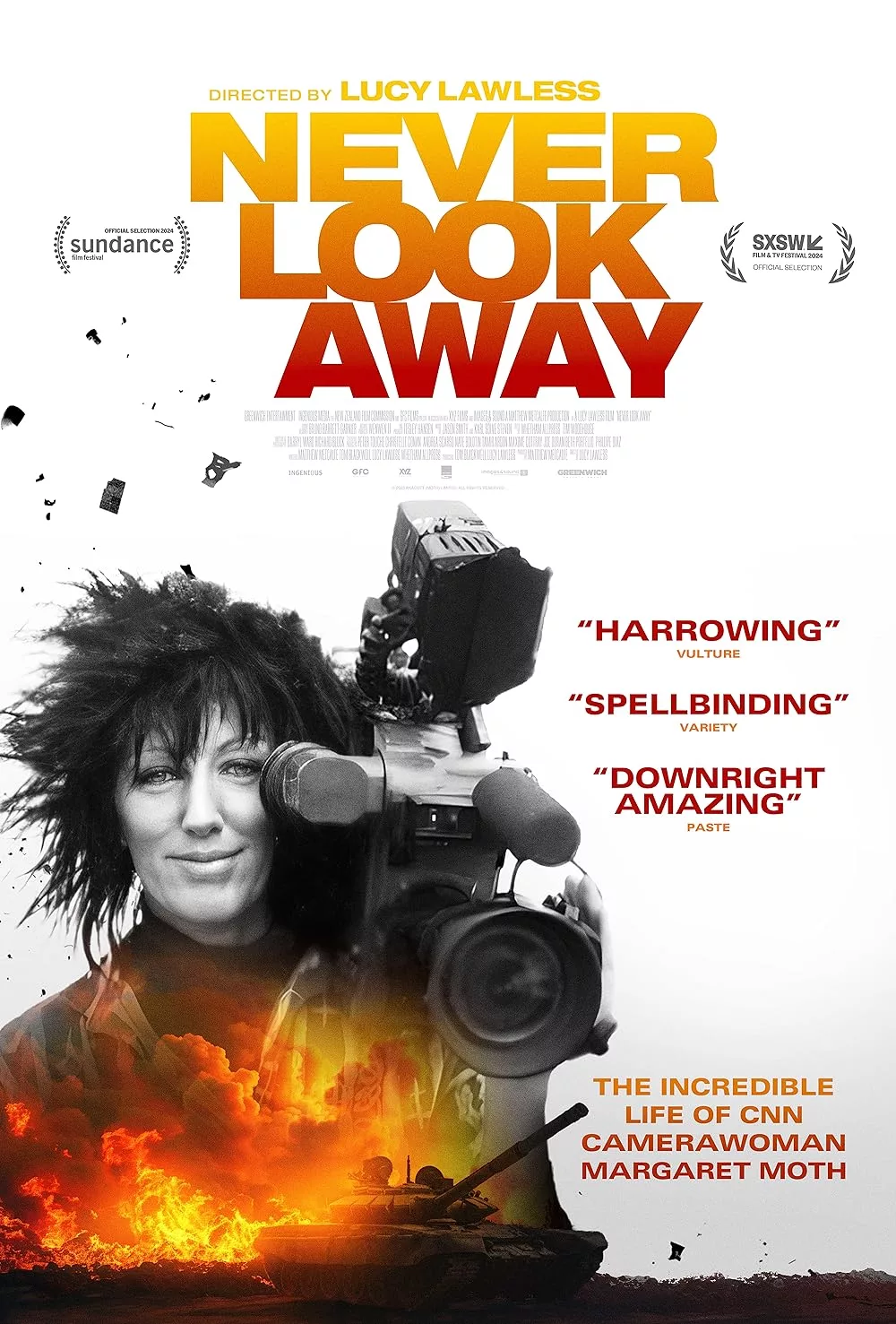“Fearless,” “uncompromising,” “a lion tamer,” “the queen of the night”— these are just some of the phrases colleagues and loved ones use to describe Margaret Moth, the undaunted New Zealand photojournalist who stood against perpetrators of violence. Armed with a camera, Moth, whose spiked, jet-black hair made her stand out in any crowd and on any landscape, traveled from war zone to war zone to document the voiceless caught in the middle of carnage. To many, Moth was indestructible … until she wasn’t.
“Never Look Away,” actress Lucy Lawless’ reverential directorial debut, aims to locate the origins of the drive that pushed this elusive and impenetrable woman to the limit. Lawless assembles Moth’s many lovers and various friends, her relaxed photography, and startling footage to build a comprehensive picture of this undeterred woman. And while she only scratches the surface of Moth’s traumatic past, “Never Look Away” still stands as a formidable anti-war project.
Moth begins as a mystery. The director takes us back to her days living in Houston, Texas, where she met a 17-year-old high schooler named Jeff Russi in 1990. The impressionable Russi, who dealt Moth acid, immediately and remained totally obsessed with the worldly woman with a punk rock attitude. He soon dropped out of school and spent his days fawning over Moth as the pair enjoyed acid, partying, skydiving, and rock shows. Russi was one of Moth’s many lovers, never questioning her preference for open relationships because of a belief that he was her one true love. While Russi doesn’t outwardly say it — he still clearly deeply cares for her — we get the sense that she caused a kind of arrested development in him. When she wasn’t in Texas, Moth enjoyed a romantic relationship with French fellow photojournalist (and heroin addict) Yashinka. Though both partners provide valuable context to Moth’s inner feelings, Lawless sometimes allows them too much control over the narrative, as the film intermittently slips into being about their personal hang ups.
Less than intrusive, “Never Look Away” further attempts to unpack Moth by tiptoeing into her childhood. Lawless speaks to Moth’s sister, who provides a partial outline of a violent homelife: a drunkard father, an abusive mother, and various methods of corporal punishment. Moth’s own messy, dark sketches fill in the rest of the blanks. Lawless even decides to employ the stylistic spirit of these etchings in the film’s visual language to express Moth’s anger. The results are less than ideal and feel far too on the nose — especially when she blends these animated flurries of black lines with scenes of avant-garde dancing.
“Never Look Away” finds greater strength in conveying Moth’s use of the camera to put truth to power. Colleagues like Christiane Amanpour and former CNN correspondent Stefano Kotsonis recall their amazement at seeing the work ethic of this fearless woman who didn’t take guff from anyone. We leap from Moth’s days covering the Gulf War from Kuwait in 1990 to her extended time documenting the civil war in Tbilisi, Georgia in 1991. The stories about her remain consistent; many are astounded by her desire to get the story — to the point of putting herself in obvious positions of harm — and are worried that she may not last long due to her odd comfortability in these brutal settings.
Their anxieties are confirmed when, while in a van driving across a marred stretch of road dubbed “sniper alley” in Sarajevo in 1992, Moth takes a sniper bullet to the jaw that causes immeasurable damage to her face and pushes her near death. Lawless recreates the attack with surprising ingenuity, relying on a scale model of the street to reference Kotsonis’ pained recounting of the day. Distressing photos of Moth’s injuries provide the scale of her physical traumas, and talking heads describe how sharply the incident altered her appearance but never blunted her soul.
Moth would return to the field, jumping from Rwanda to Bosnia to Zaire, and then to Israel, near the Lebanon border in 1996. It’s in the final locale covered by the documentary, where Moth reported on Israel’s missile attack on a UN camp in Tyre, resulting in dozens of innocent civilian casualties, that connects the film to contemporary concerns. Lawless grasps Moth’s filming of the aftermath of that tragic attack as a direct impetus for the ceasefire between Israel and Lebanon. With the genocide presently occurring in Gaza, it’s difficult not to wonder what power images of war, as reported by journalists today, have to change the course of a conflict. For over a year, a plethora of grisly and horrifying photographs of the war in Palestine have filled social media feeds, and yet the violence has not abated.
Lawless profiles Moth as a principled woman, one who believed in the camera’s ability to galvanize and to scorn. “Never Look Away” makes one wish more people were like her, unable to ignore the large-scale death that appears on their tiny screens daily. Maybe war would cease entirely. Or maybe, at the very least, we’d at least commit these images to more than just memory. We would live with them every day, becoming so haunted by their presence that we wouldn’t go a day without demanding that this genocide must end.




















